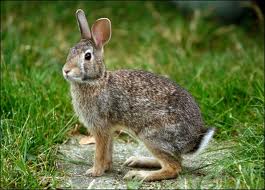Prediction of bodyweight from body measurements in rabbits using principal component analysis
Keywords:
Biometric traits, principal component analysis, multivariate analysis, statistical methodsAbstract
The study aimed atdescribing objectively the interdependence among the biometric traits and topredict body weight from their orthogonal body shape characters using principalcomponent factor analysis. Body weight and ten biometric variables namely bodylength, height at wither, thigh circumference, shoulder to tail drop, earlength, heart girth, tail length, length of front and back leg and nose toshoulder were measured on eight week old 104 F1 progeny Hyla rabbits of twogenetic groups (NZWXNZW purebred and NZWXCAL crossbred rabbits). General linearmodel and principal component analysis procedure of statistical analysis system(S.A.S 9.0) was used to compute the variations between the two breeds. Pairwise correlations between bodyweight and biometric traits were positive andhighly associated (r = 0.60-0.90, 0.62–0.94; P<0.01) for Hyla purebred andcrossbred rabbits. In the factor solution of the principal component analysis,with varimax rotation of the transformation, two factors were identified for thefirst genetic group and three factors for the second genetic group (ratio ofvariance = 83.97 and 89.88% for NZWXCAL crossbred and NZWXNZW purebred rabbitsrespectively). The first factor in each case accounted for the greatestpercentage of the total variation, and was termed general size. The subsequentfactors (indices of body shape) presented patterns of variation independent ofgeneral size. The principal component based regression models, which arepreferable for selecting animals for optimal balance, accounted for 88% of thevariation in the body weight for both Hyla purebred and crossbred rabbitsrespectively.
References
Ajayi, F.O., Ejiofor O., Ironke M.O., 2008. Estimation of bodyweight from linear body measurements in two
commercial meat-type chicken. Global J. Agr. Sci., 7, 57-59.
Akanno, E.C., Ibe, S.N., 2005. Estimation of genetic parameters for growth traits domestic in the humid tropics.
Livest. Res. Rural Dev., (LRRD) 17 (7),//www.utafoundation.org/lrrd/1707/akan 17806. htm.
Dalle Zotte, A., 2002. Main factors influencing the rabbit carcass and meat quality. Proceedings of the 7th World
Rabbit Congress, Valencia. Spain., 1-32.
Delgado, J.V., Barba C, Camacho M.E., Sereno F.T.P.S., Martinez, A., Vega-Pla J.L., 2001. Livest. Char. Spain., AGRI
, 7-18.
Everitt, B.S., Landau, S., Leese, M., 2001. Cluster Analysis. 4th edition. London, Arnold Publisher.
Gueye, E.F., Ndiaye, A., Branckaert, R.D.S., 1998. Prediction of body weight on the basis of body measurements in
mature indigenous chickens in Senegal. Livest. Res. Rural Dev., 10, http,// www. Cipav. org.co/Irrd
/3/sene103.htm.
Kabir, M., 2010. Assessment of growth and reproductive traits in diallel crossing of three rabbit breeds. PhD Thesis,
Faculty of Agriculture, Animal Science Department, Ahmadu Bello University. Zaria., pp 137.
Lanari, M.R., Taddeo, H., Domingo E., Centeno., Gallo L., 2003. Phenotypic differentiation of exterior traits in local
Criollo goat population in Patagonia (Argentina). Arch Tierz Dummerstorf., 46, 347-356.
Moses, O., Yakubu, A., Peters, S.O., Ozoje, M.O., Adebambo, O.A., Imumorin, I.G., 2011. Application of multivariate
principal component analysis to morphological characterization of indigenous goats in Southern Nigeria. Acta
agr. Slovenia, 98,2-4.
Ovimaps., 2012. Ovi location map; Ovi earth imagery date., April 3rd, 2012
Sadek, M.H., Al-Aboud, A.Z., Ashmawy, A., 2006. Factor analysis of body measurements in Arabian horses. J. Anim.
Breed. Genet.,123, 369-377.
Shahin, K.A., Hassan N.S., 2000. Sources of shared variability among body shape characters at marketing age in
New Zealand White and Egyptian rabbit breeds. Ann. Zootec., 49,435-445.
SPSS., 2009. Superior Performing Statistical Software PC version 19.0, Michigan Avenue. Chicago Illinois., USA.
Teguia, A., Ngandjou, H.M., Defang, S., Tchoumboue, T., 2008. Study of the live body weight and body
characteristics of the African Muscovy Duck (Cairina moschata). Trop. Anim. Health Product., 40, 5-10.
Truxillo, C., 2003. Multivariate Statistical Methods, Pract. Res. Appl. Course Notes. Cary, NC, SAS Institute.
Yakubu, A., 2009. Fixing collinearity instability in the estimation of body weight from morpho-biochemical traits of
West African Dwarf goats. Trakia J. Sci., 7, 61-66.
Yakubu, A., Ayoade, J.A., 2009. Application of principal component factor analysis in quantifying size and
morphological indices of domestic rabbits. Int. J. Morphol., Pp 27(4), 1013-1017.

Downloads
Published
How to Cite
Issue
Section
License
Copyright (c) 2014 O.M. Akinsola, B. I. Nwagu, M. Orunmuyi, G.T. Iyeghe-Erakpotobor, E. D. Eze, A. J. Shoyombo, E. U. Okuda, U. Louis

This work is licensed under a Creative Commons Attribution-NonCommercial-NoDerivatives 4.0 International License.



